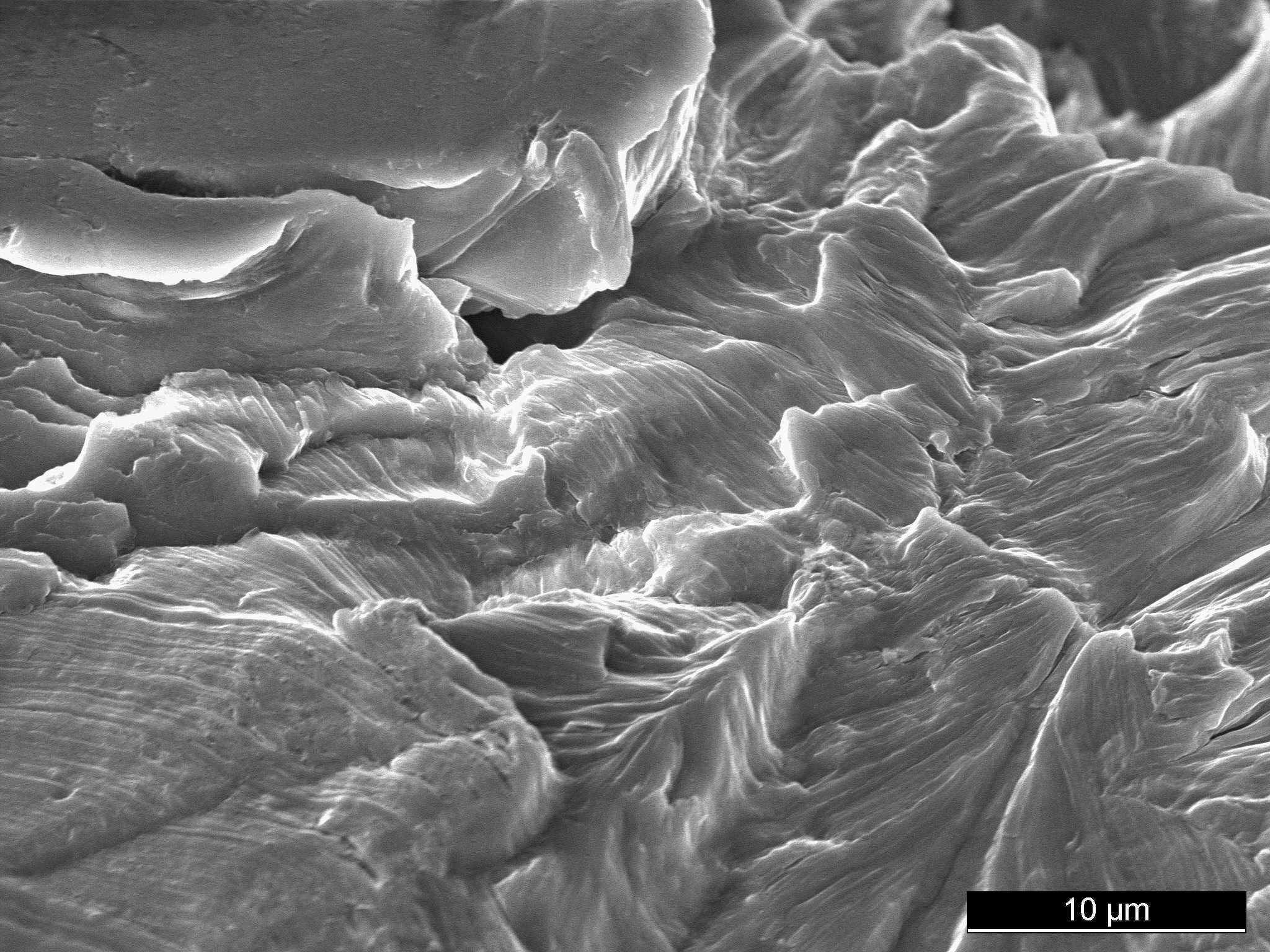IL-11: Surface analysis of a medical instrument
The RMS Foundation was commissioned to analyze forceps, which discoloured to dark grey in the daily use during cleaning and conditioning with the thermodesinfector.
The goal of the study was to figure out the reason of the colour change and how it can be avoided in the future.
The discoloured surface of the forceps couldn’t be removed with an acid pickling process and was only with mechanical grinding to remove, what cannot be used as a possibility of repair for final products (Figure 1).
![]()
Figure 1: The analysed forceps. Left an unused forceps and right a discoloured one.
The corrosion resistance of the forceps was investigated with an electrochemical pen (EC-Pen, see RMS Newsletter 3/2007). The results showed substantial differences in the corrosion behavior between the unused and the discoloured forceps. The curves of the new forceps are typical for stainless heat-treated steel (green lines in figure below): After a passive range with low current density there is a breakthrough at potentials between 0.3 and 0.7 volt against the calomel electrode.
![]() Figure 2: Current density potential curve, measured on a unused and on a discoloured forceps.
Figure 2: Current density potential curve, measured on a unused and on a discoloured forceps.
In contrast, the current density of the discoloured forceps is an order of magnitude higher (black lines). However there is no breakthrough of the passive layer up to high potentials. This shows that the discoloured oxide layer is more stable but it exhibits a higher conductivity.
The chemical composition of the surface has been investigated with X-ray photo-electron spectroscopy (XPS, see RMS Newsletter 4/2008). The detailed spec-trum of chromium (Figure below) shows that the colour change is due to a chromium oxide layer.
![]() Figure 3: XPS detailed spectra of chromium 2p.
Figure 3: XPS detailed spectra of chromium 2p.
In cleaning and reconditioning of instruments alkaline detergents are used, which are neutralized afterwards. Because of a wrong dosage of the acid neutralizer or due to an insufficient removal some acid might remain on the surface. These acid residues are concentrated during drying and can lead a passivation in the desinfector (drying step) or in the subsequent steam sterilization.
As a precautionary action the recommended dosage of the detergent and neutralizer should be controlled and monitored. Transfer of acids to the final rinsing water must be prevented with sufficient rinsing in between.
A detailed report of this study was published in Oberflächen Polysurfaces no. 6/10, p. 14-16.
Our equipment:
X-ray Photoelectron Spectroscope (XPS)
Kratos Axis Nova
In XPS the surface of a sample is irradiated with X-rays. Thus electrons are excited, which then can leave the sample. On the basis of the amount and energy of these photoelectrons the chemical composition of the top 5-10 nm of the surface can be determined.
![]()
Local Corrosion Measurement (EC-Pen)
EC-Pen with Jaissle Potentiostat for local potentiodynamic corrosion measurements on small metallic surface areas (pen tip area: 1.5 mm2).
![]()
